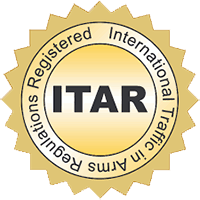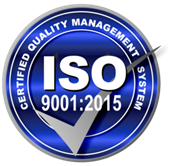
De-Risking the Global Supply Chain: A Post-Pandemic Blueprint
The COVID-19 pandemic response saw borders shut, businesses closed, and aerospace and defense (A&D) supply chains from tier X suppliers on down to OEM halted in their tracks. The crisis spotlighted the critical need for a resilient supply chain that can withstand not only the current challenges but also future unforeseen global disruptions. Through the pandemic, it has become evident that traditional models of supply chain management are no longer sufficient in a world that is becoming increasingly volatile. As such, adopting a risk-mitigated approach to supply chain management has transitioned from a best practice to a necessity for A&D suppliers and stakeholders. This need for adaptation calls for a strategic blueprint that ensures continuity, resilience, and efficiency in the face of any adversity, thereby safeguarding the sector’s future and maintaining its crucial role in global security and technological advancement.
Understanding the A&D Supply Chain Post-Pandemic
The A&D sector, known for its complex, global networks of suppliers and stringent regulatory requirements, faced unprecedented challenges as the pandemic disrupted logistics, caused factory shutdowns, and led to labor shortages. These disruptions brought to light the fragility of lean supply chains and the peril of relying heavily on single-source suppliers or geographically concentrated production hubs.
As market demands fluctuated wildly, companies struggled with supply chain bottlenecks, leading to significant delays and increased costs. In response to the difficulties faced during the pandemic, many manufacturers have focused on increasing supply chain transparency, diversifying suppliers, creating collaboration, and using analytics to help predict demand.
Ensuring Supply Chain Transparency
Creating supply chain transparency has become paramount in the aerospace and defense (A&D) sector to help anticipate risks, enhance operational efficiency, and foster trust among all stakeholders. Where constant threats to the supply chain’s integrity abound, the ability to track and trace every component’s journey from raw material to finished product is invaluable.
Transparency not only helps in pinpointing vulnerabilities and bottlenecks within the supply chain but also enables a proactive approach to risk management, allowing for swift adjustments to sourcing strategies and production schedules. Moreover, it strengthens the relationship between suppliers, manufacturers, and customers by building a foundation of trust through open communication and shared data. This level of openness is essential for collaborative problem-solving and innovation, ensuring that the A&D sector can maintain high standards of quality and security while navigating the complexities of the modern world.
Promoting Supplier Diversification
The pandemic underscored the dangers of over-reliance on single sources for critical components and ultimately revealed these to be sources of supply chain failure. By broadening the supplier base, A&D companies can mitigate these risks, ensuring that alternative sources are available when primary suppliers face unexpected challenges. Diversification also encourages competitive pricing, enhances quality through benchmarking, and fosters innovation by tapping into the diverse capabilities of suppliers from different regions and specializations.
Diversification, perhaps most importantly, enables a more agile response to changing market demands and regulatory environments, providing a buffer that can absorb shocks and maintain continuity of supply. In a landscape marked by uncertainty, supplier diversification is not just a risk management strategy but a growth enabler, ensuring resilience and sustainability in the A&D sector’s complex ecosystem.
Fostering Collaboration Across the Supply Chain
When suppliers, Tier 1 manufacturers, and OEMs engage in deep collaboration, the entire ecosystem stands to gain. Such partnerships go beyond mere transactional relationships and form around the greater good of an entire industry creating an environment where “a rising tide lifts all ships.” This paves the way for shared innovation, as collective problem-solving and knowledge exchange spur advancements in technology, materials, and processes.
This collaborative culture also extends to risk management, where the burden of unforeseen challenges is distributed, allowing for more flexible and responsive strategies to be developed and implemented. In times of crisis, a united supply chain can react more swiftly and effectively, with coordinated efforts minimizing disruptions and accelerating recovery. Ultimately, by working together, the A&D sector can achieve a level of supply chain resilience that is greater than the sum of its parts, ensuring long-term stability and progress.
Leveraging Advanced Analytics for Risk Management
Leveraging advanced analytics for risk management represents a critical evolution in the strategic oversight of the aerospace and defense (A&D) supply chain. Advanced analytics, including machine learning and AI, play a pivotal role in scanning vast amounts of data to identify patterns, trends, and potential risk factors that human analysts might overlook. This capability allows companies to move from reactive to proactive risk management, anticipating disruptions before they occur.
Predictive analytics, in particular, can forecast potential supply chain disruptions, from supplier insolvencies to geopolitical shifts, enabling A&D firms to strategize effective response plans in advance. This foresight can significantly minimize the impact of disruptions, ensuring operational continuity and competitive advantage.
Implementing Agile Supply Chain Practices
Agility in the supply chain is characterized by flexible manufacturing processes that can be easily adjusted or reconfigured to accommodate new product lines or changes in production volume. This flexibility ensures that A&D suppliers can respond to unexpected shifts in demand or supply chain disruptions without significant delays or cost overruns. Scalable operations play a crucial role as well, allowing companies to efficiently scale up or down based on current needs, thereby optimizing resource utilization and reducing waste. Another key aspect of agility is the cross-training of employees, which equips the workforce with a broad range of skills and enables them to perform multiple roles within the organization. This not only enhances operational flexibility but also contributes to a more resilient and responsive supply chain. By adopting these agile practices, A&D suppliers can better navigate the complexities of the global supply chain, quickly adapting to new challenges and opportunities with a competitive edge.
Final Thoughts
De-risking the supply chain will ultimately be a constantly evolving challenge as the risks themselves change and evolve. For companies looking to diversify suppliers of performance plastics, plated plastics and other lightweight A&D components, SAT Plating can help mitigate risk and deliver consistent, high quality products.
We offer comprehensive support spanning from R&D and prototyping, to large-scale manufacturing and seamless product delivery to our A&D partners. Contact our knowledgeable team today to begin discussing your project’s specific needs and discover how SAT Plating can assist in meeting your exact specifications. Our capabilities extend to accommodating programs that require as few as 1,000 parts or exceed 1+ million parts annually. We welcome new partnerships in this collective effort to create a supply chain that is as robust as it is revolutionary.






